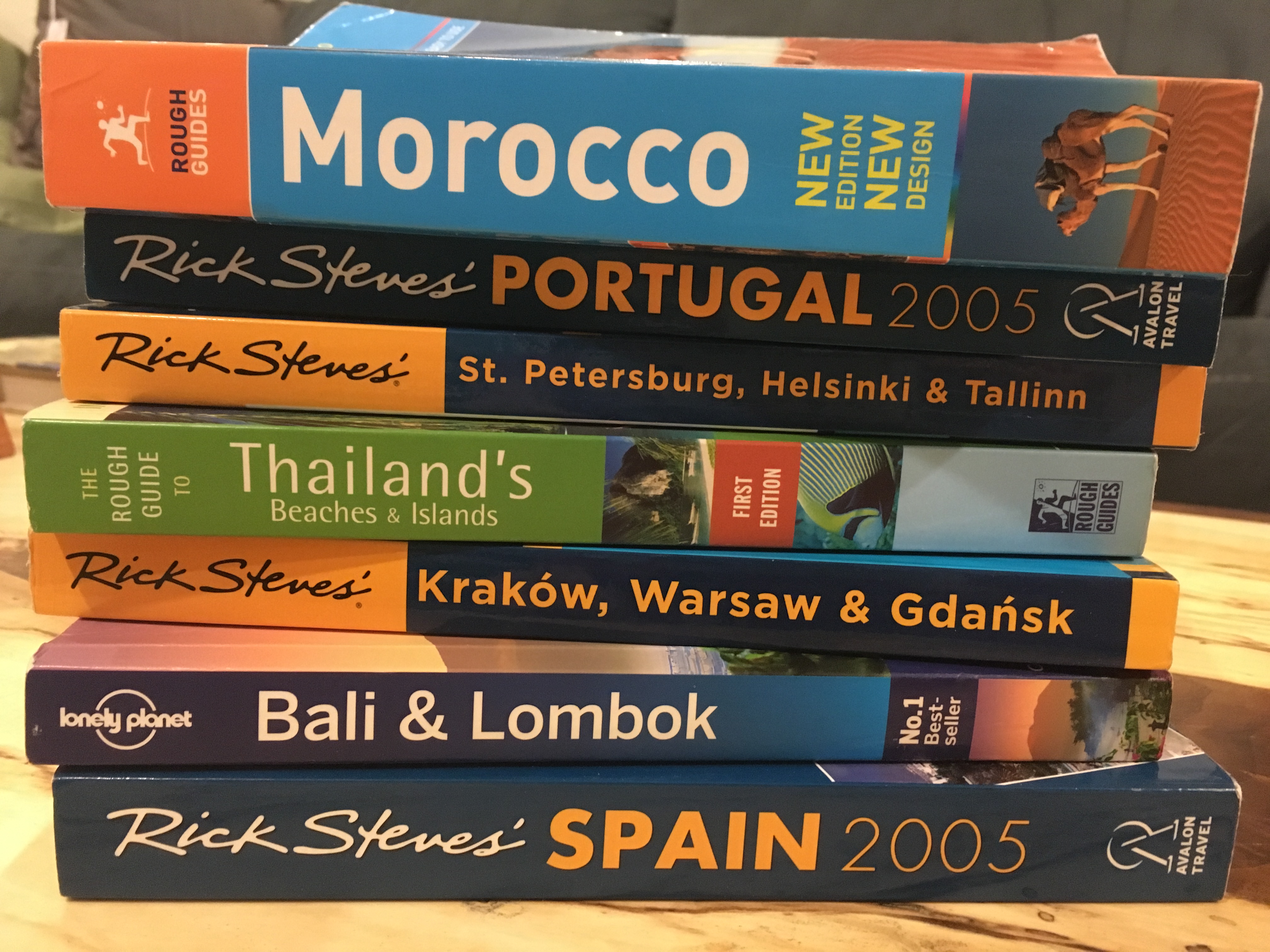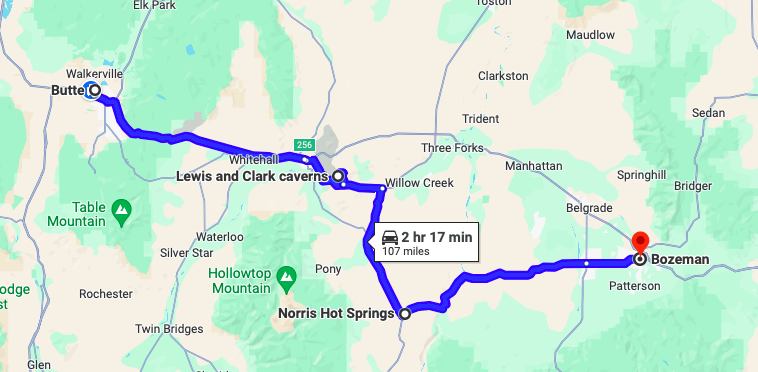One of the first things I do after we’ve booked tickets for a trip is make a beeline to the library so I can see what they have for me in the travel guidebook section. I LOVE guidebooks. Nothing gets me more excited about visiting a place than to see all the cool things that are available for me to do. This post will discuss the merits of the humble travel guidebook and recommend some things to look for as you use a guidebook to plan your next trip.

Publishing Date
The single most important feature in a good travel guidebook is its publishing date. Think about it–you’ve just read a review of a 5-star restaurant that only cost $2 per plate, but when you get there you realize the place closed in 1965. Not very helpful. When I am contemplating which guidebook to buy for a trip, I will compare the dates of a few books to see which was published or edited most recently.
A lot of guidebooks are written a while ago but are updated with current information. (This would be the best job ever. You wouldn’t even have to do that much–just go to the places that have been previously recommended and make sure they are still good. Sigh…if only.) I try to get guidebooks that have been published in the last few years.
Travel Guidebook Clientele
Most guidebooks can be grouped by the type of travel they are appealing to. Lonely Planet and Rough Guide cater to a traveler with a smaller budget and Fodors and Frommers are written for folks with a few more dollars in their bank accounts. I personally, am probably not going to be buying a Fodors or Frommers book anytime soon. I’m just not that big of a baller.
Media Type
Travel guidebooks can come in hard copy or electronic format. I prefer a hard copy book, but that’s probably because I like having something tangible in my hands. I like to tag pages that have things I am interested in and I think it is easier to find what I am looking for later. However, e-books don’t take up any space in your bag and are always at your fingertips if you keep them on your phone. I recently found deal on Travelzoo where I was able to buy three Lonely Planet e-books for $25. I will be able to give a more thorough review of that after we visit Australia next year.
Travel Guidebook Parts
Once you have selected a guidebook, you want to make the most of it. Below are the features that I find most useful.
Country History
This section is typically at the beginning of the guidebook and most people probably skip right over. This is a big mistake though (and I’m not saying that just because I have a history degree). It is always, repeat, always, a good idea to have a background of the country you are going to. Americans have a bad reputation around the world for being arrogant. Sure, English is the universal language. And sure, U.S. dollars are accepted in a lot of countries. But that doesn’t mean the rest of the world is an extension of America. A little background on a country will help you understand the country’s culture and might prepare you for how it is different than what you are used to.
Top 10, 15, 20, etc. Lists
There is a section in pretty much every travel guidebook that has colorful pictures of the places, things, experiences that the author deems most worthy of your time. These will most likely be the things that the country is most known for, but there are sure to be some gems that you haven’t heard of and might not want to miss. It would be challenging to be able to check off all of this list in your visit, but it is a great place to start to build your itinerary.

Itinerary
Speaking of itineraries, your travel guidebook should have a section that builds an itinerary for you based on a few criteria. Some do this by time (like Rick Steves) and some do it by interests (like Lonely Planet). When we travel, B and I do a little research independently and come back with the things we most want to do. Sometimes these are the same, but more often than not, they are different.
Since it is impossible to fit everything in, we pick our highest priorities and use the itinerary section of a guidebook to help us determine our own itinerary. I haven’t ever taken a trip where I follow an itinerary exactly as it listed in a guidebook. But it can be really useful to help you figure out the length of time you need for certain places, or mapping out how long it will take to get to other locations.

Anecdotes
Peppered throughout the main part of the travel guidebooks, authors will insert boxes with interesting tidbits of history, culture, etc. These are fascinating little reads and shouldn’t be skipped. For example, in Rick Steve’s Guide to Portugal, you can learn about a unique style of building that lasted for about a hundred years in the 15th century called Manueline Architecture. Portugal was wealthy at that time and decorated their buildings to the 9s. Go figure.
Walking Tours
Several books offer walking tours of towns/museums/etc. These are great (and free!) ways to learn all about whatever you are visiting. There are times when taking an organized tour is a great way to spend some money. Other times, you might not be feeling up to a tour group. A travel guidebook’s self-guided tour will give you all the important information you need to know as you walk along.

Conclusion
Travel guidebooks are an excellent tool to help you prepare and enjoy your trip. If you are heading to Europe, Rick Steves is my go-to with solid information albeit a little kitschy. In other countries, I recommend Lonely Planet, Rough Guide, or Moons. Make sure to get one with the most recent published date. Also, do not forgot that your local library is an excellent resource for finding these and others.





Leave a Reply